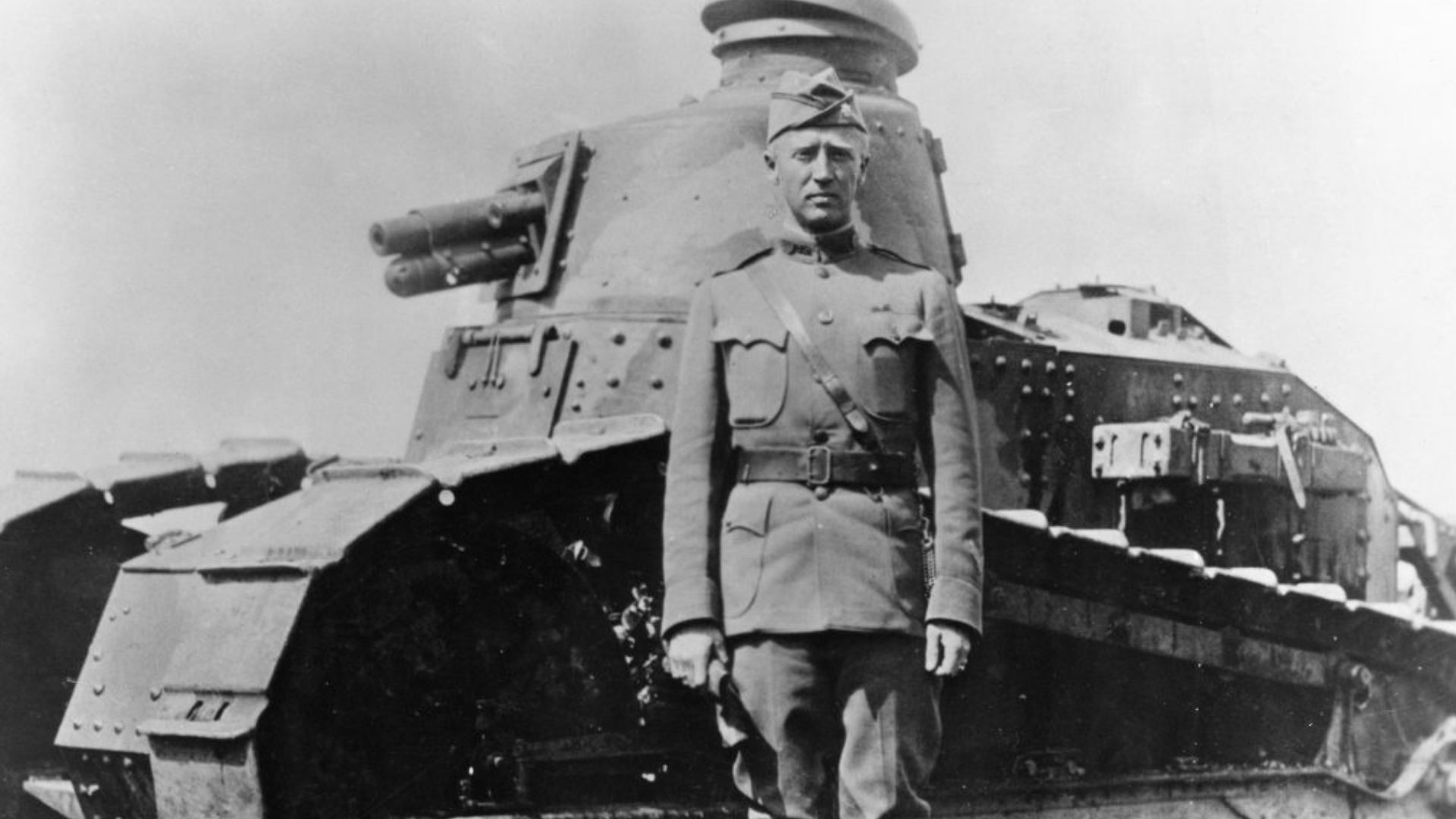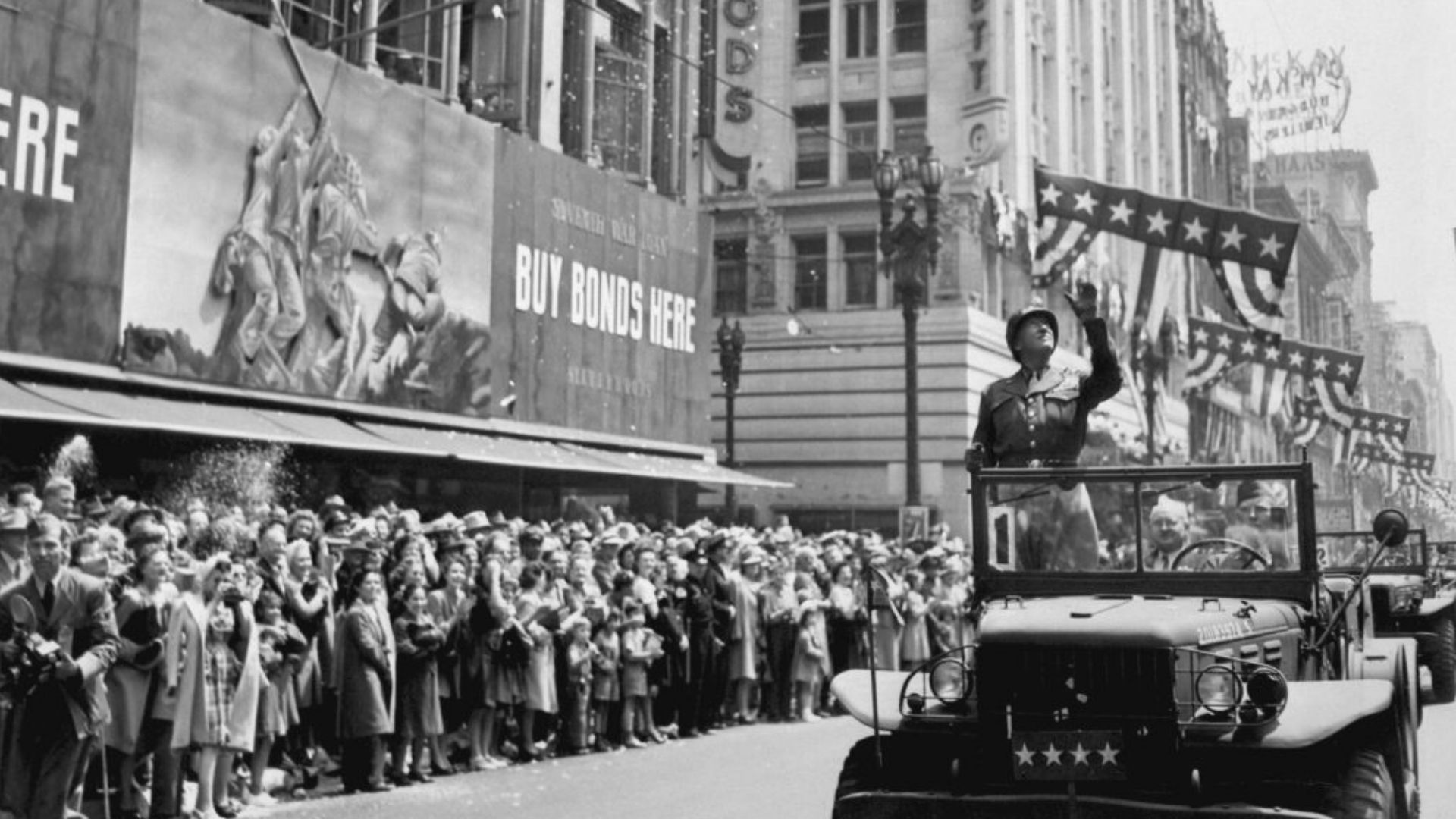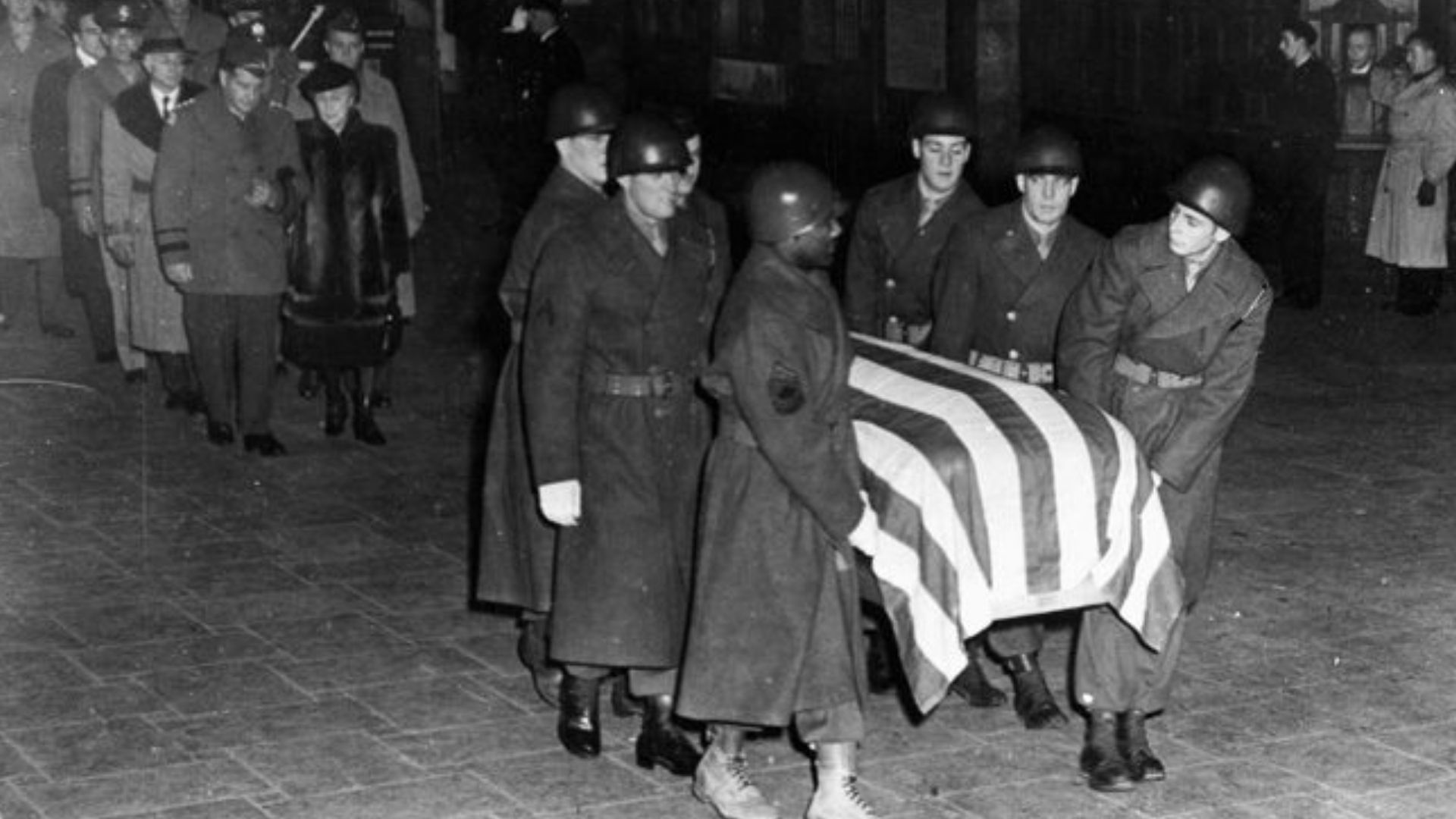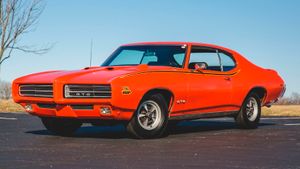Was it actually an accident?
Dead from injuries sustained in a car crash after the close of WWII, General George S. Patton, Jr. left in his wake a tremendous legacy. While some have mourned what was a tragic loss at the time, others over the decades have theorized Patton’s death was anything but an accident.
Known for his aggressive nature just as much as his many battlefield victories, General George S. Patton was like a giant among men. He was one of the few allied generals who had combat experience commanding tanks during WWI, making him invaluable during the North Africa campaign. Later, he embarrassed many of his peers in Sicily, Italy by winning the race to Messina against the British Eighth Army.

In what might seem a little too coincidental, Patton was exposed for allegedly slapping and dressing down soldiers in a field hospital since they claimed to be suffering from battle fatigue. The press wanted Patton’s blood and they were able to get some worked up enough to call for him to be relieved of duty. However, General Dwight D. Eisenhower and General George C. Marshall stepped in, likely realizing Patton was too valuable to the war effort.
After spending some time in England, Patton was key to Operation FORTITUDE, the ruse invasion staged in Pas-de-Calais, France. German commanders were so fearful of Patton’s abilities and so convinced he was leading the real invasion that they maintained troops in Pas-de-Calais even after D-Day.
One of Patton’s most famous act of heroics was during the Battle of the Bulge when he led parts of the U.S. Third Army in a counterattack, saving the hopelessly besieged 101st Airborne Division. This endeared him even more to soldiers and the public in general.

On December 9, 1945, Patton was still stationed in Germany when he accepted an invitation from his chief of staff, Major General Hobart Gay, to go pheasant hunting near the base. Originally, Patton was sitting in the front seat of the Cadillac which was being driven by Private H.L. Woodring, his favorite chauffeur. However, when the general noticed the hunting guide’s dog was riding in an open-top jeep, he asked for the party to pull over and had the dog sit in the front of the car so it could warm up. Patton moved to the backseat. Sadly, the good deed would not go unpunished.
While traveling over a railroad crossing, the Cadillac collided with the passenger side of a U.S. Army truck which was turning left. Some claim the limousine Patton was riding in was traveling at a relatively low speed. Others say Private Woodring was going too fast for conditions. During the accident, Patton struck his head on the glass partition in front of him. That impact resulted in a compression fracture and dislocation of the cervical third and fourth vertebrae as well as cervical spinal cord injury. He was paralyzed from the neck down. A mere 12 days later, on December 21, one of the greatest generals the United States Army has ever known passed away from his injuries.
Fueling speculation that the accident with the U.S. Army truck was in truth not an accident but instead was a coordinated assassination was the fact Patton rubbed Russian officers the wrong way in many social and diplomatic relations. He also had been talking about the prospects of invading Russia, saying they were obviously inferior to Americans and would fold in no time. Many in the upper ranks of the U.S. Military didn’t like such a proposition, a feeling which was shared by much of Washington, D.C. and other powers that be of the time. Some believe it was Stalin who had Patton killed because he feared the man could pull off an invasion successfully. Others claim it was the CIA, others in the US government, actors in the British government, or even Allied leaders working with Stalin to get rid of Patton.

Patton also was vocal in post-war Germany about the denazification process and other moves with the government. Eisenhower removed him as the U.S. commander in Bavaria for the politically unwise statements and was transferred to the 15th Army Group, his final post.
The only four star general to be buried at an American Battle Monuments Commission cemetery, Patton was laid to rest alongside his men at Luxembourg American Cemetery, per his request. Just like in his life, in death the general was a man of the people. Beloved by his soldiers and a good portion of the public, it’s entirely possible others saw him as too big of a threat, especially since there was no longer a worldwide war to be fought.
Sources: American Battle Monuments Commission, Mountain Democrat, Warfare History Network, History.com






